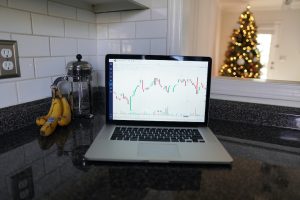Forex, also known as foreign exchange, is a decentralized global market where all the world’s currencies are traded. It is the largest financial market in the world, with a daily turnover of over $5 trillion. Forex is open 24/7, providing traders with the opportunity to buy and sell currencies at any time.
When it comes to setting up a Forex account, the cost will vary depending on the broker you choose and the type of account you want to open. In this article, we will explore the different types of Forex accounts and their associated costs.
Types of Forex Accounts
There are three main types of Forex accounts: demo accounts, standard accounts, and premium accounts.
1. Demo Accounts
Demo accounts are free accounts that allow traders to practice trading in a risk-free environment. These accounts are ideal for beginners who want to learn how to trade Forex without risking any real money. Demo accounts usually come with a virtual balance that traders can use to practice trading strategies and test the broker’s trading platform.
2. Standard Accounts
Standard accounts are the most popular type of Forex account. These accounts require a minimum deposit, which varies from broker to broker. The minimum deposit can range from $50 to $500, depending on the broker. Standard accounts offer traders access to a wide range of currency pairs, as well as other trading instruments such as CFDs and commodities.
3. Premium Accounts
Premium accounts are designed for high net worth individuals and institutional traders. These accounts require a higher minimum deposit, usually starting at $10,000 or more. Premium accounts offer traders access to higher leverage, tighter spreads, and other exclusive features such as personalized customer support.
Costs Associated with Forex Accounts
When it comes to the costs associated with Forex accounts, there are several factors to consider.
1. Spread
The spread is the difference between the bid price and the ask price of a currency pair. It is the main way that Forex brokers make money. The spread can vary depending on the broker and the currency pair being traded. Generally, major currency pairs such as EUR/USD and USD/JPY have lower spreads than exotic currency pairs such as USD/ZAR.
2. Commission
Some Forex brokers charge a commission on each trade instead of making money through the spread. The commission can vary depending on the broker and the type of account you have. Premium accounts usually have lower commissions than standard accounts.
3. Swap
A swap is a fee that is charged for holding a position overnight. The swap can be positive or negative, depending on the currency pair being traded and the interest rates of the countries involved. The swap can be a significant cost for traders who hold positions for long periods.
4. Withdrawal Fees
Some Forex brokers charge a fee for withdrawing funds from your trading account. The fee can vary depending on the broker and the withdrawal method you choose. For example, bank wire transfers usually have higher fees than e-wallets.
Conclusion
In conclusion, the cost of setting up a Forex account will depend on the type of account you choose and the broker you select. Demo accounts are free, while standard accounts require a minimum deposit that can range from $50 to $500. Premium accounts are designed for high net worth individuals and institutional traders and require a higher minimum deposit of $10,000 or more. The costs associated with Forex accounts include the spread, commission, swap, and withdrawal fees. It is essential to consider these costs when choosing a Forex broker and trading strategy.





